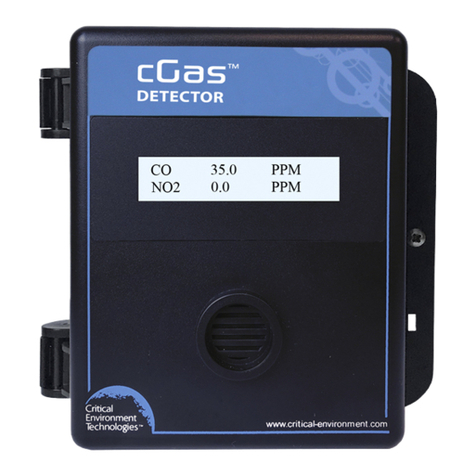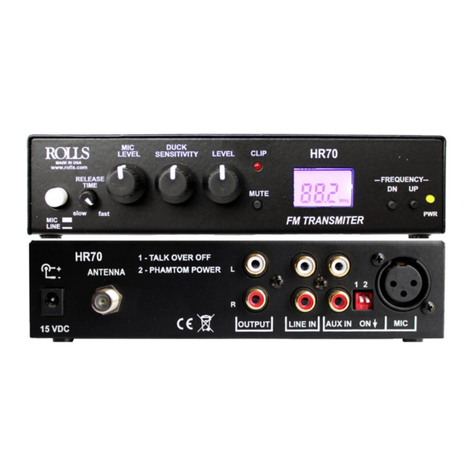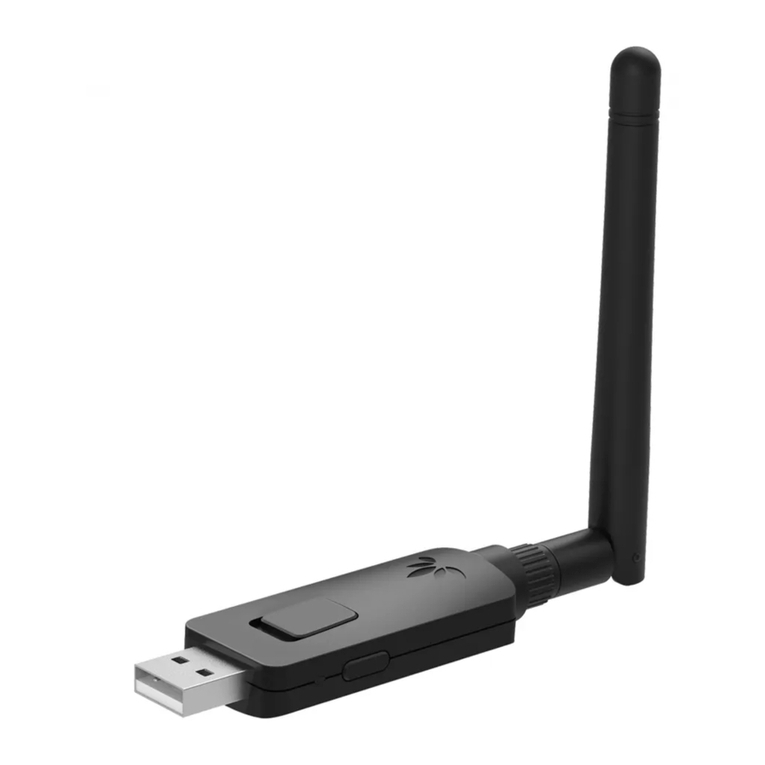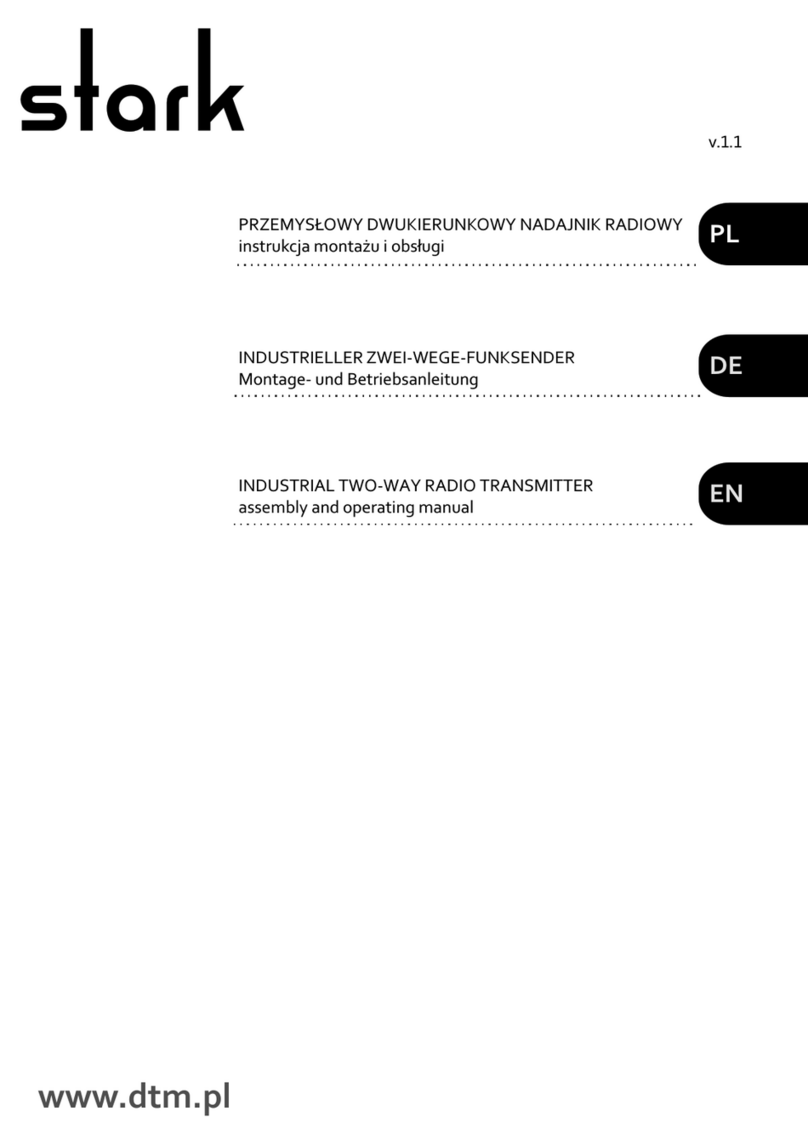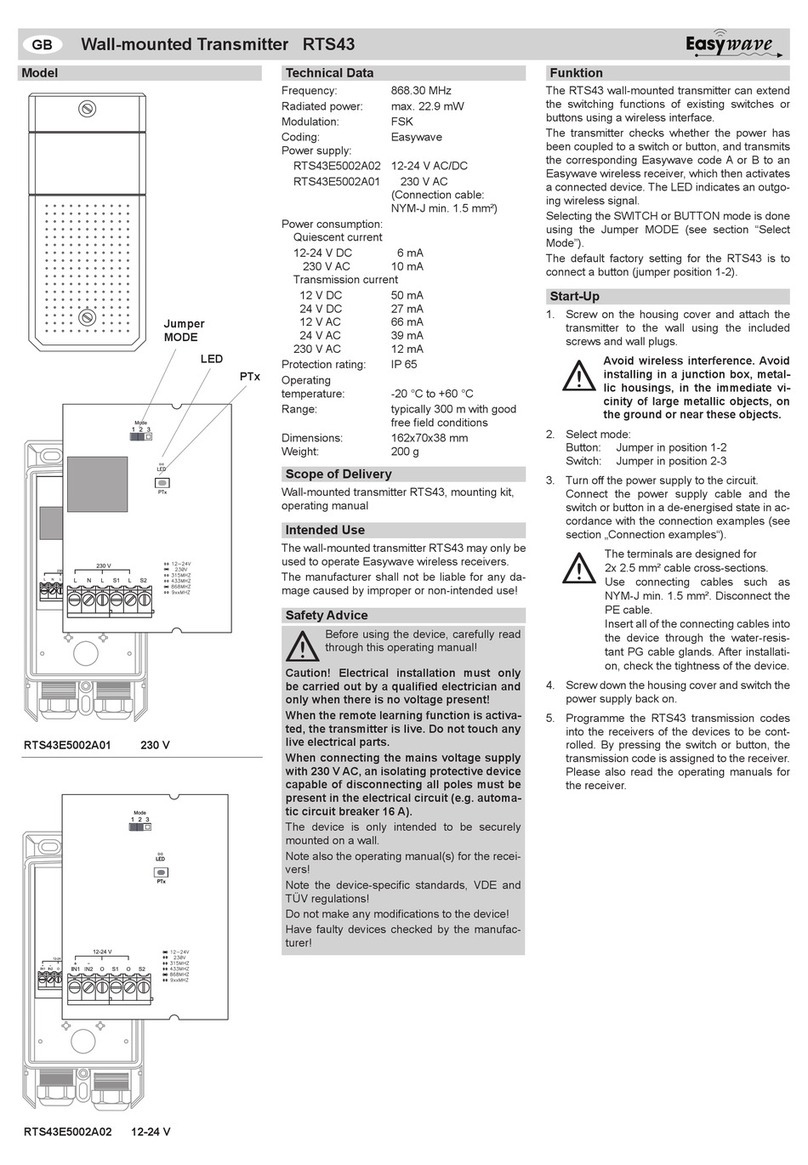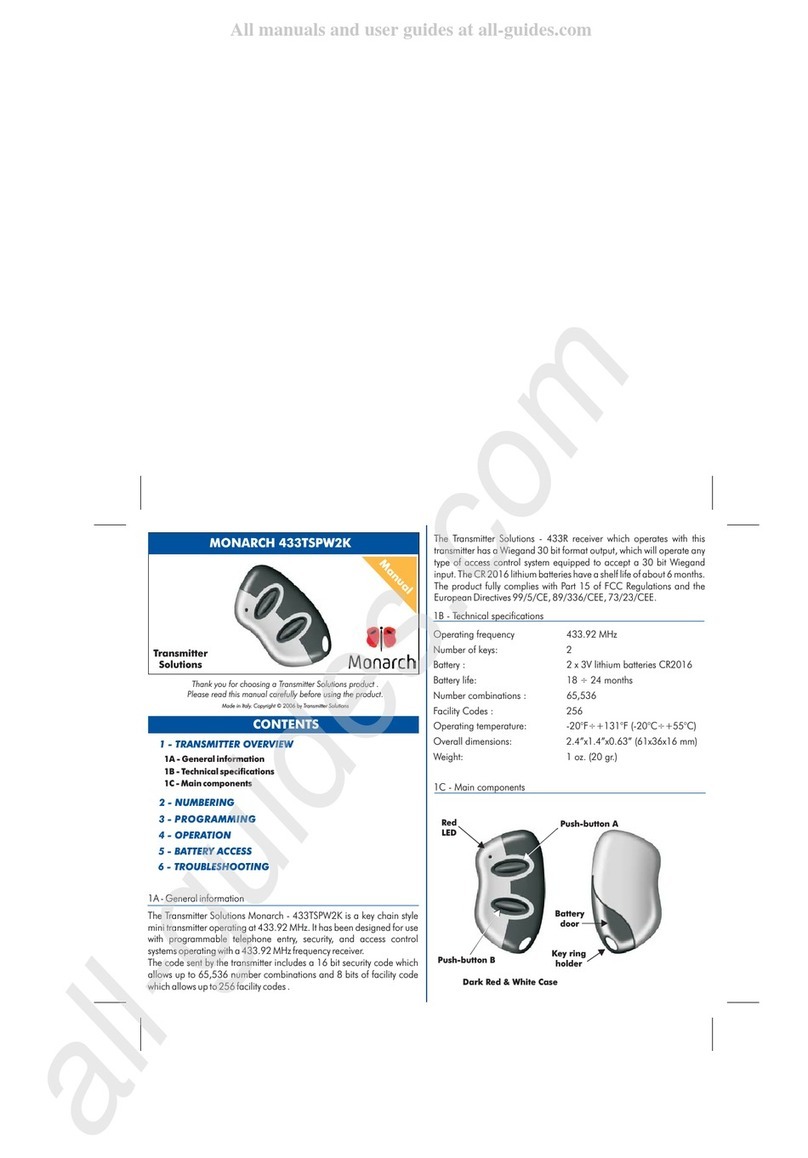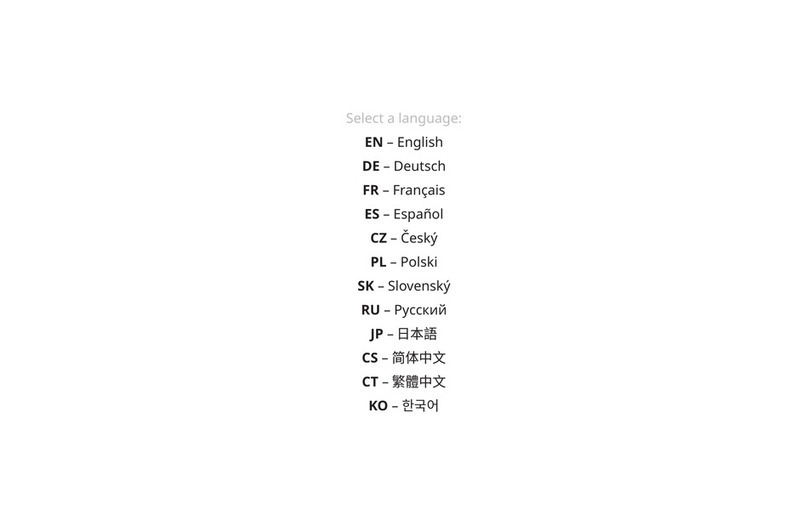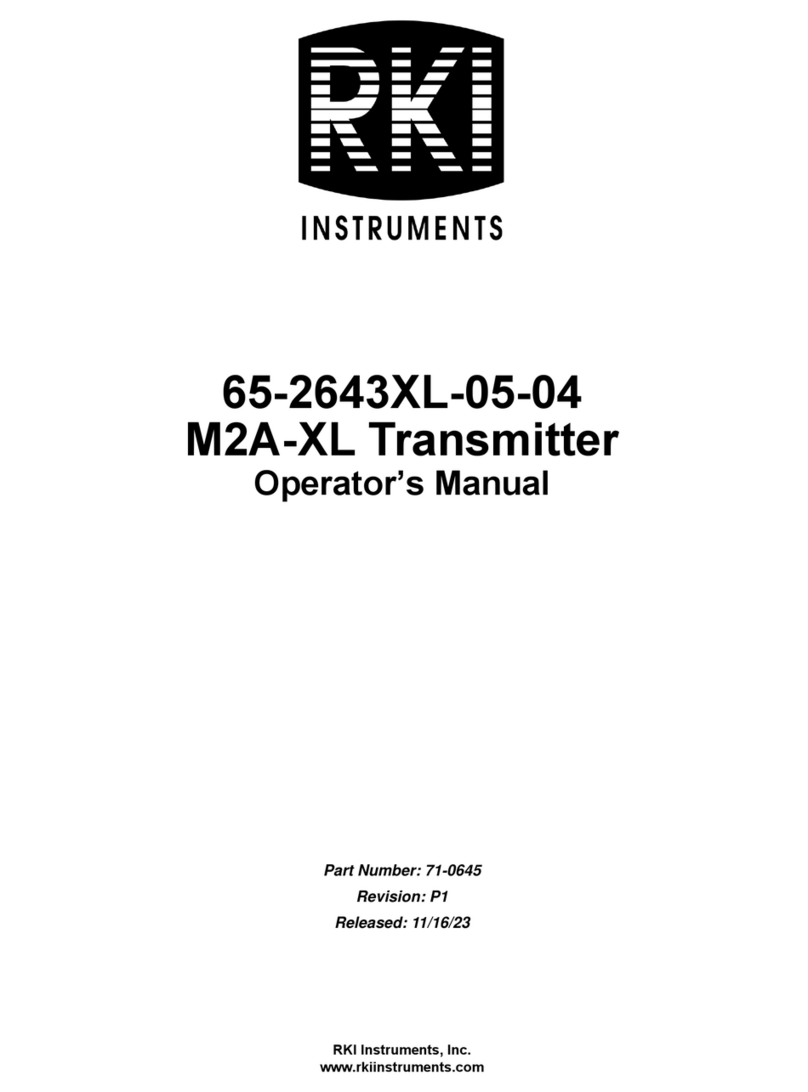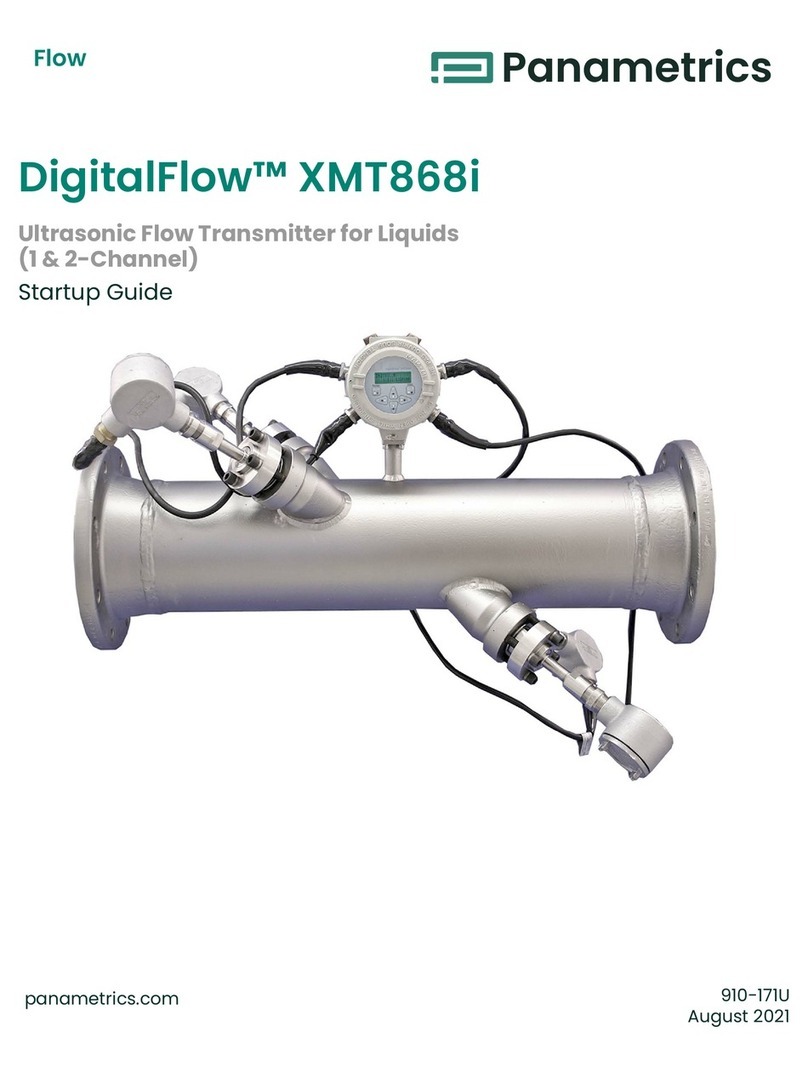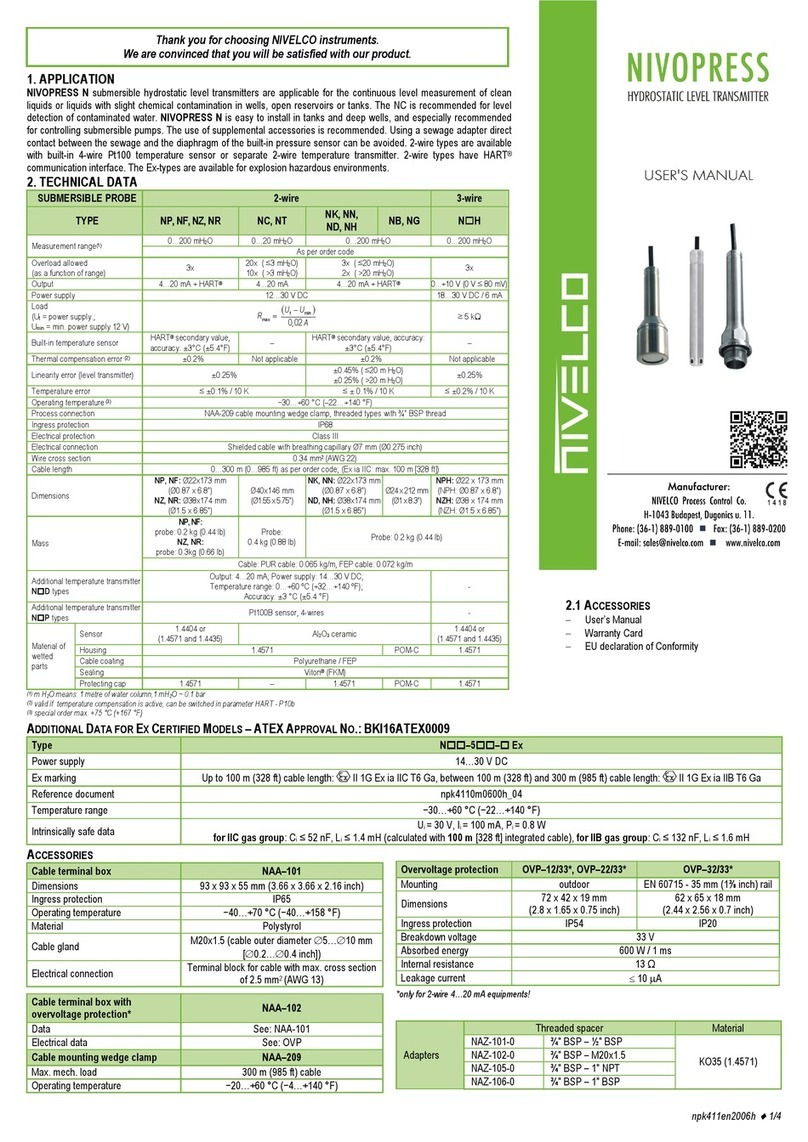CET ART User manual

Operation Manual
www.critical-environment.com
ARTInfrared Refrigerant Transmitter
Rev. 5 | 2018.03

ART - Operation Manual Rev. 5 | 2018.03
2 © 2018 All rights reserved. Data subject to change without notice.
TABLE OF CONTENTS
1 POLICIES..........................................................................................................5
1.1 Important Note................................................................................................5
1.2Warranty Policy................................................................................................6
1.3 Service Policy...................................................................................................6
1.4 Copyrights........................................................................................................7
1.5 Disclaimer........................................................................................................7
1.6 Revisions..........................................................................................................8
2 INTRODUCTION .............................................................................................9
2.1 General Description..........................................................................................9
2.2 Key Features.....................................................................................................9
3 INSTRUMENT SPECIFICATIONS .................................................................10
3.1Technical Specications..................................................................................10
3.2 Enclosure Dimensions ....................................................................................13
4 SENSOR SPECIFICATIONS...........................................................................14
4.1 List of Available Internal Refrigerant Gases....................................................14
4.2 Special Considerations for Infrared Sensors....................................................15
4.3 Changing GasTypes and Accuracy..................................................................16
5 FEATURES......................................................................................................18
5.1 Front Exterior Enclosure .................................................................................18
5.2 Interior System Layout...................................................................................20
5.2.1 Front of the Enclosure ..................................................................................... 20
5.2.2 Back of the Enclosure ......................................................................................21
6 MOUNTING / INSTALLING ..........................................................................22
6.1Warnings and Prerequisites............................................................................22

Rev. 5 | 2018.03 ART - Operation Manual
© 2018 All rights reserved. Data subject to change without notice. 3
6.2 Mounting Locations .......................................................................................23
6.2.1 General Placement Guidelines ........................................................................23
6.2.2 Machinery Rooms ...........................................................................................23
6.2.3 Refrigerated Spaces......................................................................................... 24
6.2.4 Chillers............................................................................................................25
6.3 Mounting Procedure ......................................................................................25
7 WIRING AND CONFIGURATION .................................................................28
7.1 Overview........................................................................................................28
7.2Wiring Supply Power (24 VAC or 24 VDC)........................................................29
7.2.1 Maintaining Neutral Polarity........................................................................... 30
7.3Wiring Alarm Output (Analog Signal).............................................................31
7.4Wiring Digital Alarm Output Relay.................................................................32
7.5 Connecting to a Controller..............................................................................33
7.6 Modbus Network Conguration.....................................................................33
7.7 Conclusion .....................................................................................................35
8 OPERATION AND STABILIZATION .............................................................36
8.1 Power Up andWarm-up.................................................................................36
8.2 Stabilization...................................................................................................36
8.3 Perform a Manual Zero...................................................................................36
8.4 Behavior During Alarm Conditions.................................................................37
8.5 Gas Detector Faults ........................................................................................37
8.5.1 Overview.........................................................................................................37
8.5.2 Non-Critical Faults...........................................................................................37
8.5.3 Critical Faults................................................................................................... 38
9 CONFIGURING / SETTING THE PARAMETERS..........................................39
9.1 User Interface Overview.................................................................................39
9.2 Setting Parameters ........................................................................................40

ART - Operation Manual Rev. 5 | 2018.03
4 © 2018 All rights reserved. Data subject to change without notice.
9.2.1 Overview.........................................................................................................40
9.2.2 Conguring Parameters ..................................................................................40
9.3 Completing Setup..........................................................................................49
10 FUNCTIONAL TESTS AND GAS ADJUSTMENTS....................................50
10.1Warnings and Cautions ................................................................................50
10.2 BumpTest vs Adjusting Detector Response..................................................51
10.3 BumpTesting...............................................................................................52
10.4 Adjustment Using Calibration Gas................................................................54
11 MODBUS COMMUNICATIONS.................................................................56
11.1 Introduction.................................................................................................56
11.2 Communication Settings..............................................................................56
11.3 Analog Input Registers.................................................................................57
11.4 Analog Output Registers..............................................................................58
11.5 Input Status Flags ........................................................................................59
11.6 Output Status Flags......................................................................................60
12 REPLACEMENT PARTS AND ACCESSORIES ...........................................60
12.1 Calibration Kit..............................................................................................60
12.2 Metal Protective Guard ................................................................................61
12.3 Splash Cover.................................................................................................62
12.3.1 Splash Cover Mounting .................................................................................62
13 TROUBLE SHOOTING ................................................................................64
13.1 Fault Codes...................................................................................................64
13.2 Diagnostic Attributes (P.-18)........................................................................66
13.3 Resetting to DefaultValues..........................................................................68
13.4 Other Symptoms..........................................................................................69

Rev. 5 | 2018.03 ART - Operation Manual
© 2018 All rights reserved. Data subject to change without notice. 5
1 POLICIES
1.1 Important Note
Read and understand this manual prior to using this instrument. Carefully read the warranty policy,
service policy, notices, disclaimers and revisions on the following pages.
This product must be installed by a qualied electrician or factory trained technician and according
to instructions indicated in this manual. This instrument should be inspected and calibrated
regularly by a qualied and trained technician. For more information, refer to Section 10 Functional
Tests and Gas Adjustments of this manual.
This instrument has not been designed to be intrinsically safe. For your safety, do not use it in
classied hazardous areas (explosion-rated environments).
INSTRUMENT SERIAL NUMBER:
______________________________________________________
PURCHASE DATE:
______________________________________________________
PURCHASED FROM:
______________________________________________________

ART - Operation Manual Rev. 5 | 2018.03
6 © 2018 All rights reserved. Data subject to change without notice.
1.2 Warranty Policy
Critical EnvironmentTechnologies Canada Inc. (CETCI), also referred to as the manufacturer,
warrants this instrument, (excluding sensors, battery packs, batteries, pumps and lters) to be free
from defects in materials and workmanship for a period of two years from the date of purchase
from our facility. The sensors have a warranty period of one year on a pro-rated basis from
the date of purchase from our facility. If the product should become defective within this
warranty period, we will repair or replace it at our discretion.
The warranty status may be aected if the instrument has not been used and maintained per the
instructions in this manual or has been abused, damaged, or modied in any way.This instrument
is only to be used for purposes stated herein.The manufacturer is not liable for auxiliary interfaced
equipment or consequential damage.
Due to ongoing research, development, and product testing, the manufacturer reserves the right to
change specications without notice. The information contained herein is based on data considered
accurate. However, no warranty is expressed or implied regarding the accuracy of this data.
All goods must be shipped to the manufacturer by prepaid freight. All returned goods must be
pre-authorized by obtaining a Returned Merchandise Authorization (RMA) number. Contact the
manufacturer for a number and procedures required for product transport.
1.3 Service Policy
CETCI maintains an instrument service facility at the factory. Some CETCI distributors / agents may
also have repair facilities; however, CETCI assumes no liability for service performed by anyone
other than CETCI personnel.
Repairs are warranted for 90 days after date of shipment (sensors have individual warranties).
Should your instrument require non-warranty repair, you may contact the distributor from whom it

Rev. 5 | 2018.03 ART - Operation Manual
© 2018 All rights reserved. Data subject to change without notice. 7
was purchased or you may contact CETCI directly.
Prior to shipping equipment to CETCI, contact our oce for an RMA #. All returned goods must be
accompanied with an RMA number.
If CETCI is to do the repair work, you may send the instrument, prepaid, to:
Attention: Service Department
Critical Environment Technologies Canada Inc.
Unit 145, 7391 Vantage Way
Delta, BC, V4G 1M3
Always include your Returned Merchandise Authorization (RMA) number, address, telephone
number, contact name, shipping / billing information, and a description of the defect as you
perceive it.You will be contacted with a cost estimate for expected repairs, prior to the performance
of any service work.
For liability reasons, CETCI has a policy of performing all needed repairs to restore the instrument to
full operating condition.
Pack the equipment well (in its original packing if possible), as we cannot be held responsible for
any damage incurred during shipping to our facility.
1.4 Copyrights
This manual is subject to copyright protection; all rights are reserved. Under international and
domestic copyright laws, this manual may not be copied or translated, in whole or in part, in any
manner or format, without the written permission of CETCI.
1.5 Disclaimer
Under no circumstances will CETCI be liable for any claims, losses or damages resulting from or

ART - Operation Manual Rev. 5 | 2018.03
8 © 2018 All rights reserved. Data subject to change without notice.
arising out of the repair or modication of this equipment by a party other than CETCI service
technicians, or by operation or use of the equipment other than in accordance with the printed
instructions contained within this manual or if the equipment has been improperly maintained or
subjected to neglect or accident. Any of the foregoing will void the warranty.
Under most local electrical codes, low voltage wires cannot be run within the same conduit as line
voltage wires. It is CETCI policy that all wiring of our products meet this requirement.
It is CETCI policy that all wiring be within properly grounded (earth or safety) conduit.
1.6 Revisions
This manual was written and published by CETCI.The manufacturer makes no warranty or
representation, expressed or implied including any warranty of merchantability or tness for
purpose, with respect to this manual.
All information contained in this manual is believed to be true and accurate at the time of printing.
However, as part of its continuing eorts to improve its products and their documentation, the
manufacturer reserves the right to make changes at any time without notice. Revised copies of this
manual can be obtained by contacting CETCI or visiting
www.critical-environment.com.
Should you detect any error or omission in this manual, please contact CETCI at the following
address:
Critical Environment Technologies Canada Inc.
Unit 145, 7391VantageWay, Delta, BC, V4G 1M3, Canada
Toll Free: +1.877.940.8741
Telephone: +1.604.940.8741
Fax: +1.604.940.8745

Rev. 5 | 2018.03 ART - Operation Manual
© 2018 All rights reserved. Data subject to change without notice. 9
Email: mark[email protected]
Website: www.critical-environment.com
In no event will CETCI, its ocers or employees be liable for any direct, special, incidental or
consequential damages resulting from any defect in any manual, even if advised of the possibility
of such damages.
2 INTRODUCTION
2.1 General Description
Thank you for purchasing our ART Infrared Refrigerant Transmitter. The ART is a single channel,
non-dispersive infrared, xed gas detector which can detect a wide range of refrigerant gases.
The fast-responding sensor accurately detects refrigerant gas leaks without cross-interference
from combustible or toxic gases. It can be used on a stand-alone basis, connected to a controller or
integrated into a Building Management System (BMS).
If after reading through the manual, you have any questions, please do not hesitate to contact our
service department for technical support.
2.2 Key Features
• Long-life, non-dispersive infrared refrigerant sensor allows for accurate low-level leak
detection with no cross-interference from other non-refrigerant gases
• Detects all refrigerants (CFC, HCFs, HCFC, HFOs) including HF01234YF, HFO1234Ze,
HFO1233ZD, R410a, R22, R32, and more
• Use as a standalone system or integrate into a larger system
• Modbus® RTU interface to connect to a BAS/BMS/DDC
• User selectable, Modbus® or analog output 4-20 mA, 0-5V, 1-5V, 0-10V, 2-10V

ART - Operation Manual Rev. 5 | 2018.03
10 © 2018 All rights reserved. Data subject to change without notice.
• On-board alarm relay
• LED real-time display with on-board audible and visual alarms
3 INSTRUMENT SPECIFICATIONS
3.1 Technical Specications
GAS TYPE
Refrigerants
R22, R32, R123, R134a, R404a, R407a, R407c, R407f. R410a, R422a, R422d, R427a, R448a,
R449a, R452a, R507, R513a, R514a, HFO1233ZD, HFO1234YF, HFO1234Ze,
MECHANICAL
Enclosure ABS plastic with a UL ammability rating of 94V-0
Weight 180 g / 0.40 lb / 6.3 oz
Size 4.0”x 5.5”x 1.5” / 102 mm x 140 mm x 37 mm
ELECTRICAL
Power Requirement 24VDC @ 0.5 A min
24VAC, 5 VA min @ 50 - 60 Hz, 2.5W max
Wiring 24VAC or 24VDC two-conductor shielded 14 to 22 AWG stranded
within conduit

Rev. 5 | 2018.03 ART - Operation Manual
© 2018 All rights reserved. Data subject to change without notice. 11
INPUT / OUTPUT
Analog Outputs 4-20 mA, 0-5V, 0-10 V, 1-5V, 2-10V
Modbus RTU over
RS-485
Baud rate:
Start bits:
Data bits:
Parity:
Stop bits:
Re-entry time:
End of msg:
9,600 or 19,200 (selectable)
1
8
none, odd, even (programmable)
1 or 2 (programmable)
500 ms (min time between retries)
silent 3.5 characters
Relays One relay rated 1 A @ 24VAC/VDC (0.5A, 125V AC UL rating)
SENSOR
Type Infrared
Range 0 - 3,500 ppm
Squelch
Readings below 75 ppm are squelched by default. Meaning, when
ltering is disabled (see Parameter P.-19 on page 48), the unit will
respond to concentrations sub -10 ppm.
ResponseTime, T90 < 5 minutes
USER INTERFACE
Display Green LED Power ON indicator and bright, alpha-numeric LED real-
time display

ART - Operation Manual Rev. 5 | 2018.03
12 © 2018 All rights reserved. Data subject to change without notice.
Audible Alarm Buzzer; enable/disable
Visual Alarm Red 4-digit LED display
Alarm Delay Selectable; 0 to 15 minutes
Fault Monitoring Fault codes presented to user
ENVIRONMENTAL
Operating
Temperature -30°C to 40°C (-22°F to 104°F)
Operating Humidity 5 - 90% RH non-condensing
CERTIFICATIONS
Conforms to CE / UL / CSA / IEC / EN 61010-1
IP Rating Not IP rated. An accessory splash guard is available for areas requiring
additional protection from wash down.

Rev. 5 | 2018.03 ART - Operation Manual
© 2018 All rights reserved. Data subject to change without notice. 13
3.2 Enclosure Dimensions

ART - Operation Manual Rev. 5 | 2018.03
14 © 2018 All rights reserved. Data subject to change without notice.
4 SENSOR SPECIFICATIONS
4.1 List of Available Internal Refrigerant Gases
The ART is shipped factory certied and calibrated to the target refrigerant. For more information
on Parameter 11 and refrigerant conguration instructions, see Section 9 Setting and Conguring
the Parameters.
Part Number Refrigerant Range Accuracy Lifespan
ART-B-R22 R22 0 - 3,500 ppm ±5% 7-10 yrs
ART-B-R32 R32 0 - 3,500 ppm ±5% 7-10 yrs
ART-B-123 R123 0 - 3,500 ppm ±5% 7-10 yrs
ART-B-R134A R134a 0 - 3,500 ppm ±5% 7-10 yrs
ART-B-R404A R404a 0 - 3,500 ppm ±5% 7-10 yrs
ART-B-R407A R407a 0 - 3,500 ppm ±3% 7-10 yrs
ART-B-R407C R407c 0 - 3,500 ppm ±3% 7-10 yrs
ART-B-R407F R407f 0 - 3,500 ppm ±3% 7-10 yrs
ART-B-R410A R410a 0 - 3,500 ppm ±3% 7-10 yrs
ART-B-R422A R422a 0 - 3,500 ppm ±5% 7-10 yrs
ART-B-R422D R422d 0 - 3,500 ppm ±5% 7-10 yrs
ART-B-R427A R427a 0 - 3,500 ppm ±3% 7-10 yrs

Rev. 5 | 2018.03 ART - Operation Manual
© 2018 All rights reserved. Data subject to change without notice. 15
ART-B-R448A R448a 0 - 3,500 ppm ±5% 7-10 yrs
ART-B-R449A R449a 0 - 3,500 ppm ±5% 7-10 yrs
ART-B-R452A R452a 0 - 3,500 ppm ±5% 7-10 yrs
ART-B-R507 R507 0 - 3,500 ppm ±5% 7-10 yrs
ART-B-R513A R513a 0 - 3,500 ppm ±5% 7-10 yrs
ART-B-R514A R514a 0 - 3,500 ppm ±5% 7-10 yrs
ART-B-HFO1234YF HFO1234YF 0 - 3,500 ppm ±5% 7-10 yrs
ART-B-HFO1234ZE HFO1234ZE 0 - 3,500 ppm ±5% 7-10 yrs
ART-B-HFO1233ZD HFO1233ZD 0 - 3,500 ppm ±5% 7-10 yrs
4.2 Special Considerations for Infrared Sensors
Using infrared sensor technology will ensure the highest degree of sensor accuracy if monitoring an
area where there are other contamination gases or multiple refrigerants in the same area.
Infrared refrigerant sensors should not be used in locations that have corrosive chemicals such as
chlorine, ammonia and other oxidizers that are present, especially if there is a higher humidity
level. High humidity environments can eect response and promote corrosion.
Typically requires 10 to 20 minutes to equalize after a sudden variation in temperature. May take up
to 30 minutes to stabilize from a sudden change in humidity.
Water or vapour condensation in wet environments may impair the optics ability to function.

ART - Operation Manual Rev. 5 | 2018.03
16 © 2018 All rights reserved. Data subject to change without notice.
Installing the splash cover is recommended in wet environments where spray downs occur.
Dusty/dirty environments can coat the optics and impair the sensor response. A regular maintnance
schedule that includes cleaning the optics may be necessary.
No minimum level of oxygen is required; operates in the absence of, or enriched presence of
oxygen.
The ART can be re-calibrated in the eld to new target gases. Use optional calibration instructions
in Section 10 Functional Tests and Gas Adjustments for increased accuracy when detecting a new
target gas that is dierent from the“as shipped”target gas.
4.3 Changing Gas Types and Accuracy
As Shipped
The ART-R22 is factory calibrated to R22 and has an AS-SHIPPED R22 response
accuracy of ±5% of reading.

Rev. 5 | 2018.03 ART - Operation Manual
© 2018 All rights reserved. Data subject to change without notice. 17
Changed Gas Type
(Reduced Accuracy)
The gas detector may be changed to respond to any of the other listed refrigerants
(see Parameter P.-11 in Section 9.2 Setting Parameters). If changed, the gas detector
will have a lower accuracy for the target refrigerant (without calibration). In this
example, that accuracy is ±16% of reading.
Optional Calibration
(For Improved Accuracy)
By applying calibration gas containing the NEW target refrigerant, and via the
routine described in Section 10.4 Adjustment Using Calibration Gas, the gas detector
may then be adjusted to respond with the calibrated accuracy of ±5% of reading as
shown in the chart in Section 4.1.

ART - Operation Manual Rev. 5 | 2018.03
18 © 2018 All rights reserved. Data subject to change without notice.
5 FEATURES
5.1 Front Exterior Enclosure
Œ
Ž
•
•
terior Enclosu
re
•
‘
“
’

Rev. 5 | 2018.03 ART - Operation Manual
© 2018 All rights reserved. Data subject to change without notice. 19
NUMBER FEATURE FUNCTION
ŒPower LED Green LED, indicates unit power is ON.
•4-digit LED Display Alpha-numeric display (to show concentration in
real-time)
ŽInformation Button
Used to access the parameter list. Used to back up
one level without writing to memory when the
parameter list is active. Used to mute the audible
alarm for the time period congured in parameter
P.-12.
•Up Button Used to increment the value or parameter displayed.
•Down Button
Used to decrement the value or parameter
displayed. (When the Up Button and Down Button
are pressed and held together for 5 seconds, this key
combination manually zeroes the gas detector.)
‘Enter/Select Button Saves the currently displayed parameter to memory.
’Cable Glands
(2 places)
Pre-installed cable gland is on the left.The optional
cable gland is on the right (if installed). See Section
7 Wiring and Conguration.
“Test Gas Port Used to connect the regulator during testing.

ART - Operation Manual Rev. 5 | 2018.03
20 © 2018 All rights reserved. Data subject to change without notice.
5.2 Interior System Layout
5.2.1 Front of the Enclosure
NUMBER FEATURE FUNCTION
ŒIR Bench Location of the Infrared sensor.
•Relay Pluggable terminal for relay connection.
Œ
Ž
•
•
Table of contents
Other CET Transmitter manuals
Popular Transmitter manuals by other brands
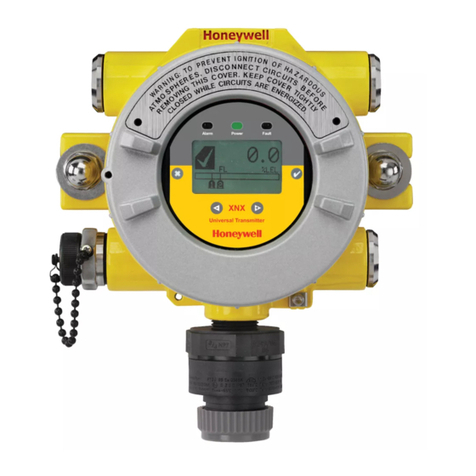
Honeywell
Honeywell XNX quick start guide
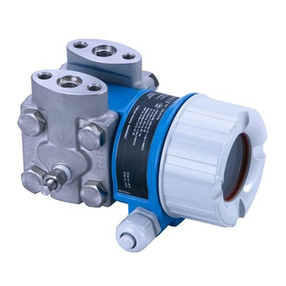
Endress+Hauser
Endress+Hauser Deltabar M PMD55 Brief operating instructions
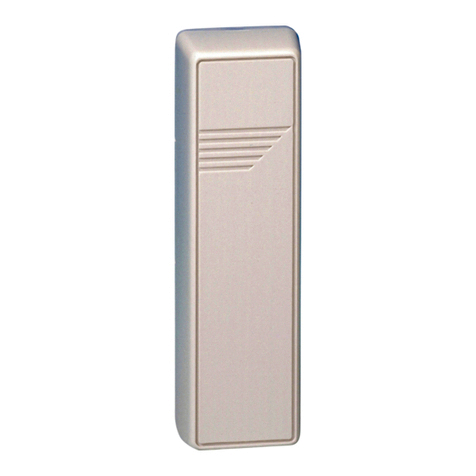
ADEMCO
ADEMCO 5819 Installation instructions and operators manual
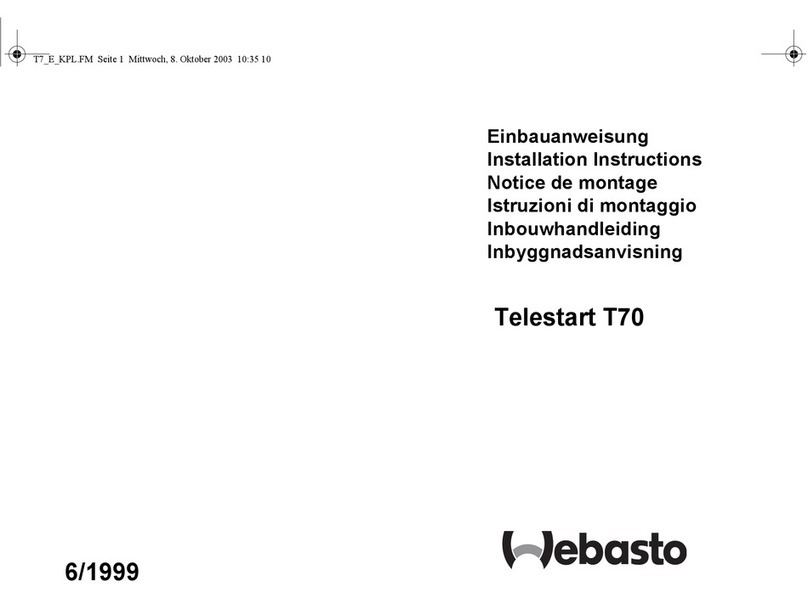
Webasto
Webasto Telestart T70 installation instructions

Suntor
Suntor ST15NMT-MiNi user manual

Thermokon
Thermokon DPA+ Dual quick start guide
